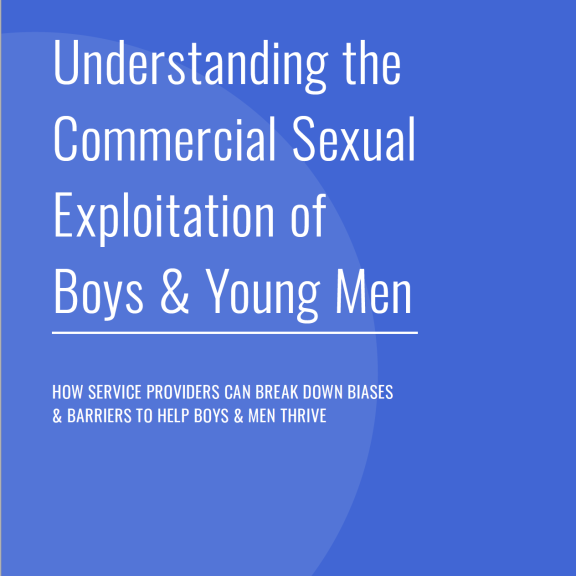Improving supports for male survivors of sexual exploitation
Guide aims to help service providers break biases, better help boys and young men thrive
All young people deserve safe spaces and connections with supportive people who promote their health and well-being, allowing them to be who they are and pursue their dreams. The unfortunate reality, however, is this isn't always the case.
Youth who have experienced, or are currently experiencing, commercial sexual exploitation endure intense and complex trauma, with many encountering untold challenges in getting the support they need. This is particularly true for boys and young men, a population for whom sexual exploitation and trafficking has long been underrecognized and underreported.
Raising Awareness, Offering Solutions
The commercial sexual exploitation of boys and young men is often overlooked. Our new guide, "Understanding the Commercial Sexual Exploitation of Boys & Young Men" — developed in partnership with MenHealing, giantslayer., and Bob's House of Hope — aims to help service providers break down biases and barriers to better identify boys and young men and help them recover and prosper.
The dominant narrative has focused on the commercial sexual exploitation of cisgender girls. The little attention paid to boys and young men focuses on males as willing participants, sex buyers, or exploiters, rather than victims. "However, there is growing recognition that boys and young men also experience [commercial sexual exploitation] and there is a need for improved identification, as well as support and services, to help them heal and thrive," reads a portion of the guide's introduction. We must devote resources to all youth.
Exploring the impact of trauma
Boys and young men who are victims and survivors of commercial sexual exploitation are a group in need of support. At least one in six men have been sexually abused or assaulted, according to a recent report, with male youth who have histories of sexual abuse facing an 8 times greater risk of being later trafficked for sex than those who don't.
In this guide for service providers, explore the effects sexual abuse trauma has on boys and young men, including its impact on health, substance use, and juvenile justice involvement, and also look at how gender stereotypes and biases play a role in limiting identification and disclosure of commercial sexual exploitation.
Opening with a first-person account from a survivor and concluding with several recommendations, learn about:
- Improving support, recognizing and addressing biases;
- Tips on helpful trainings and education materials;
- Suggestions for building services and safe spaces for boys and young men; and
- Expanding funding and investment in these services.
Download the guide, and also check out our guide focused on improving services for youth survivors of sexual exploitation who identify as LGBTQIA2S+.



